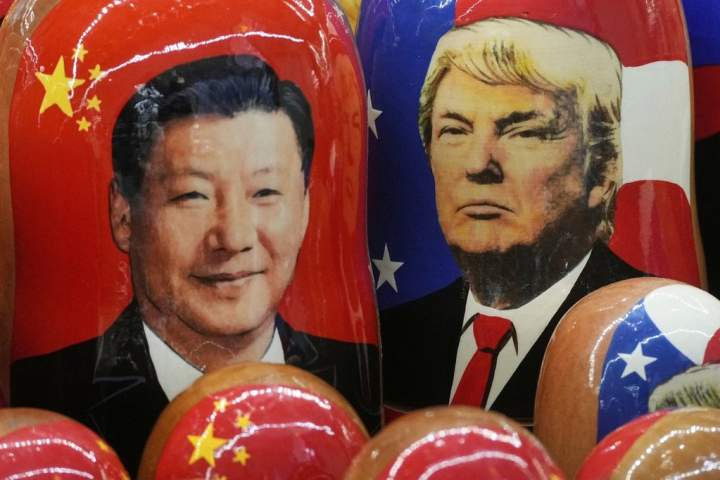World
U.S. and China Extend Tariff Deadline for 90 Days, Easing Tensions

U.S. President Donald Trump announced on March 4, 2024, that he has extended a trade truce with China for an additional 90 days, postponing a potential escalation in tariffs between the two largest economies. This extension was confirmed by both Trump, via his Truth Social platform, and China’s Ministry of Commerce. The previous deadline was set to expire at 12:01 a.m. March 5, 2024, which would have allowed the U.S. to increase tariffs on Chinese imports to a staggering 30 percent.
This pause in tariff increases provides both countries with valuable time to negotiate and potentially resolve lingering trade disputes. Business leaders in the U.S. welcomed the extension, seeing it as crucial for maintaining market stability and fostering discussions on trade agreements that could enhance American companies’ access to the Chinese market. Sean Stein, president of the U.S.-China Business Council, stated that the extension is “critical” for negotiations, emphasizing the need for an agreement on issues such as fentanyl that would allow for a reduction in tariffs and a rollback of retaliatory measures from China.
China also announced it would extend relief for American companies previously placed on an export control list and an unreliable entities list, easing some restrictions that had been imposed in response to earlier U.S. tariffs.
Background on Trade Relations
The ongoing trade negotiations have significant implications for both nations. Following the imposition of tariffs by Trump in April 2023, China had responded by limiting exports of dual-use goods to certain U.S. companies, as well as banning others from trading or investing in China. The Chinese government indicated it would stop these restrictions for some companies while granting others another 90-day reprieve.
Reaching a comprehensive trade agreement has been a goal for Trump, who has transformed the U.S. into a more protectionist economy. The average U.S. tariff has risen from approximately 2.5 percent at the beginning of 2023 to 18.6 percent, the highest level since 1933, according to the Budget Lab at Yale University. Trump’s trade policies have had wide-reaching consequences, prompting other nations, including the European Union and Japan, to negotiate unfavorable trade deals to avoid higher tariffs.
The trade landscape between the U.S. and China has been further complicated by China’s own economic strategies, including potential restrictions on rare earth minerals essential for various industries, from electric vehicles to aerospace.
Future Implications
Despite the temporary extension, experts express caution regarding the potential for a grand bargain. Major grievances remain, including China’s handling of intellectual property rights and industrial subsidies that the U.S. argues create an uneven playing field. The U.S. trade deficit with China was recorded at a staggering $262 billion in the previous year.
As negotiations continue, analysts like Ali Wyne from the International Crisis Group note that the Trump administration’s reliance on tariffs has highlighted the limits of unilateral leverage. They argue that the U.S. has not secured the upper hand in its dealings with China, which could embolden Beijing in future negotiations.
While some limited agreements may emerge, such as commitments from China to purchase more American agricultural products and curb the flow of chemicals used to manufacture fentanyl, deeper issues are likely to persist. Jeff Moon, a former U.S. diplomat, predicts that the trade war will continue for years, suggesting that a resolution may remain elusive.
The extension of the tariff deadline offers a brief period of relief; however, significant challenges lie ahead as both nations navigate complex economic relationships and pursue their respective interests on the global stage.
-

 Politics4 weeks ago
Politics4 weeks agoSecwepemc First Nation Seeks Aboriginal Title Over Kamloops Area
-

 World5 months ago
World5 months agoScientists Unearth Ancient Antarctic Ice to Unlock Climate Secrets
-

 Entertainment5 months ago
Entertainment5 months agoTrump and McCormick to Announce $70 Billion Energy Investments
-

 Science5 months ago
Science5 months agoFour Astronauts Return to Earth After International Space Station Mission
-

 Lifestyle5 months ago
Lifestyle5 months agoTransLink Launches Food Truck Program to Boost Revenue in Vancouver
-

 Technology3 months ago
Technology3 months agoApple Notes Enhances Functionality with Markdown Support in macOS 26
-

 Lifestyle3 months ago
Lifestyle3 months agoManitoba’s Burger Champion Shines Again Amid Dining Innovations
-

 Top Stories2 months ago
Top Stories2 months agoUrgent Update: Fatal Crash on Highway 99 Claims Life of Pitt Meadows Man
-

 Politics4 months ago
Politics4 months agoUkrainian Tennis Star Elina Svitolina Faces Death Threats Online
-

 Sports5 months ago
Sports5 months agoSearch Underway for Missing Hunter Amid Hokkaido Bear Emergency
-

 Politics5 months ago
Politics5 months agoCarney Engages First Nations Leaders at Development Law Summit
-

 Technology5 months ago
Technology5 months agoFrosthaven Launches Early Access on July 31, 2025




















